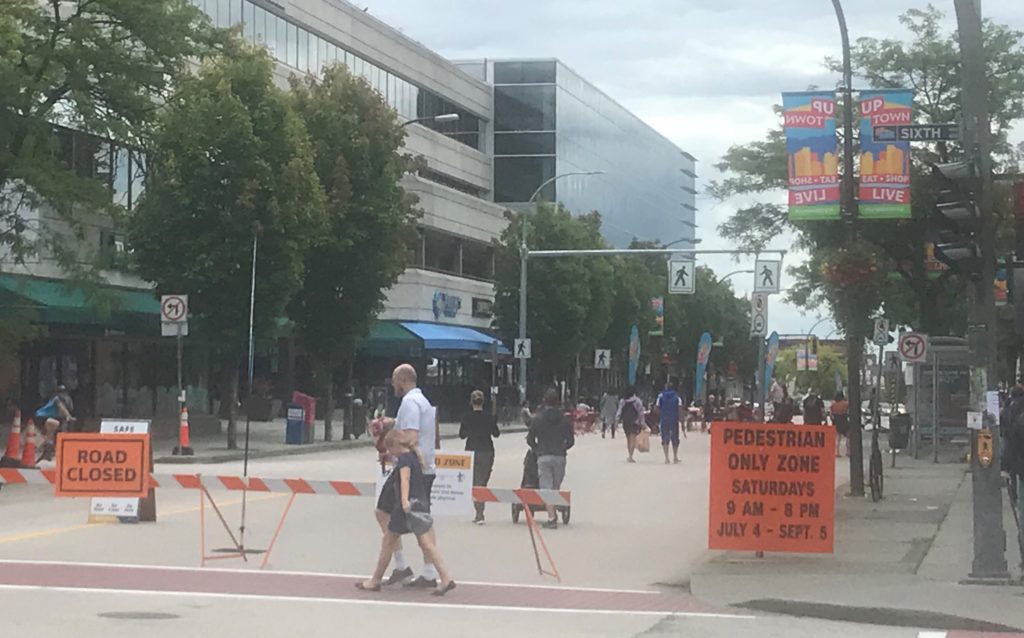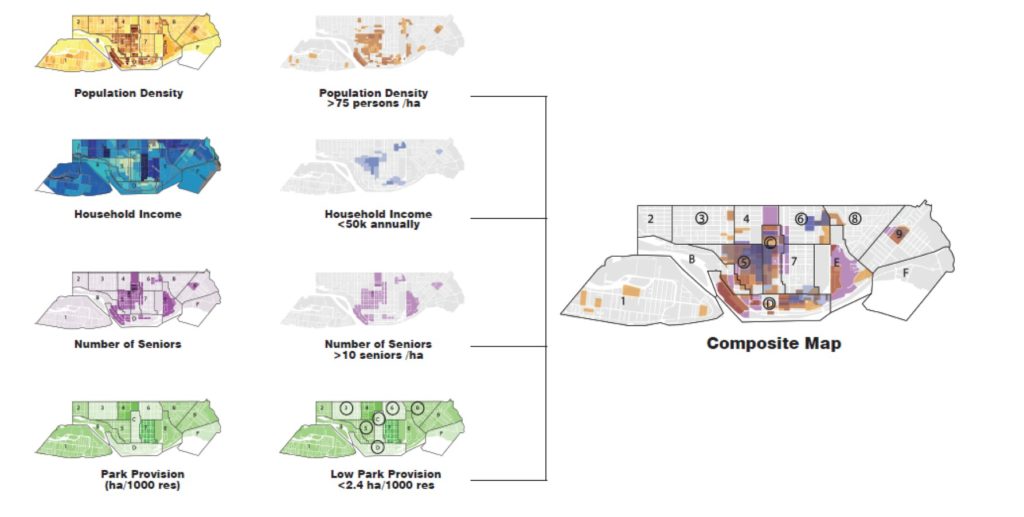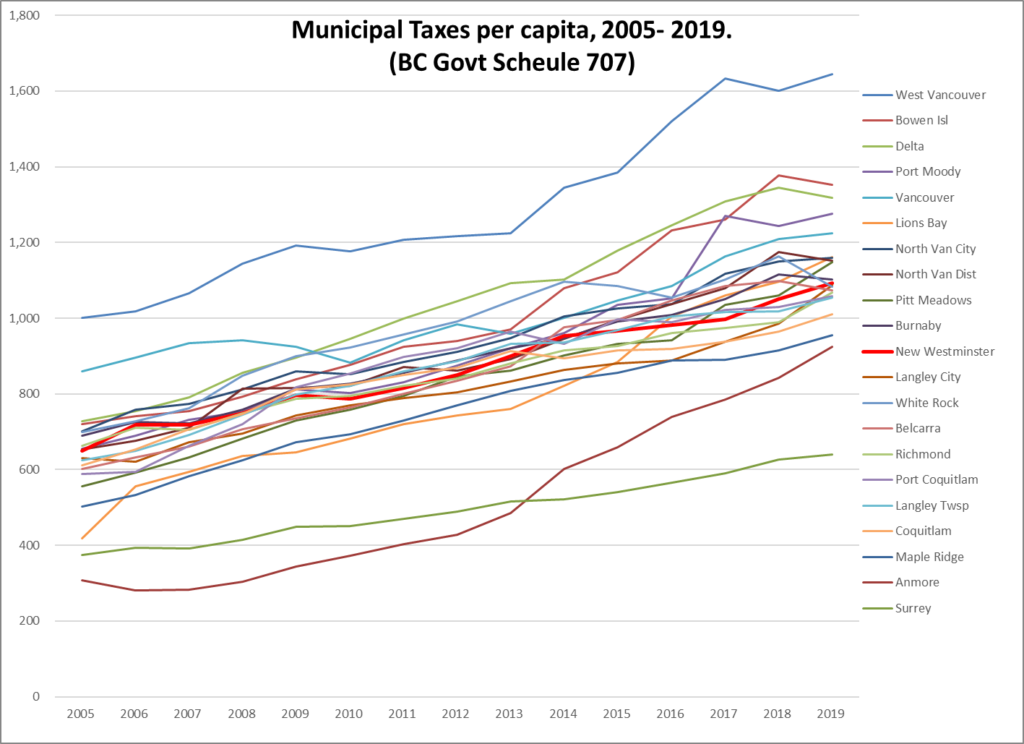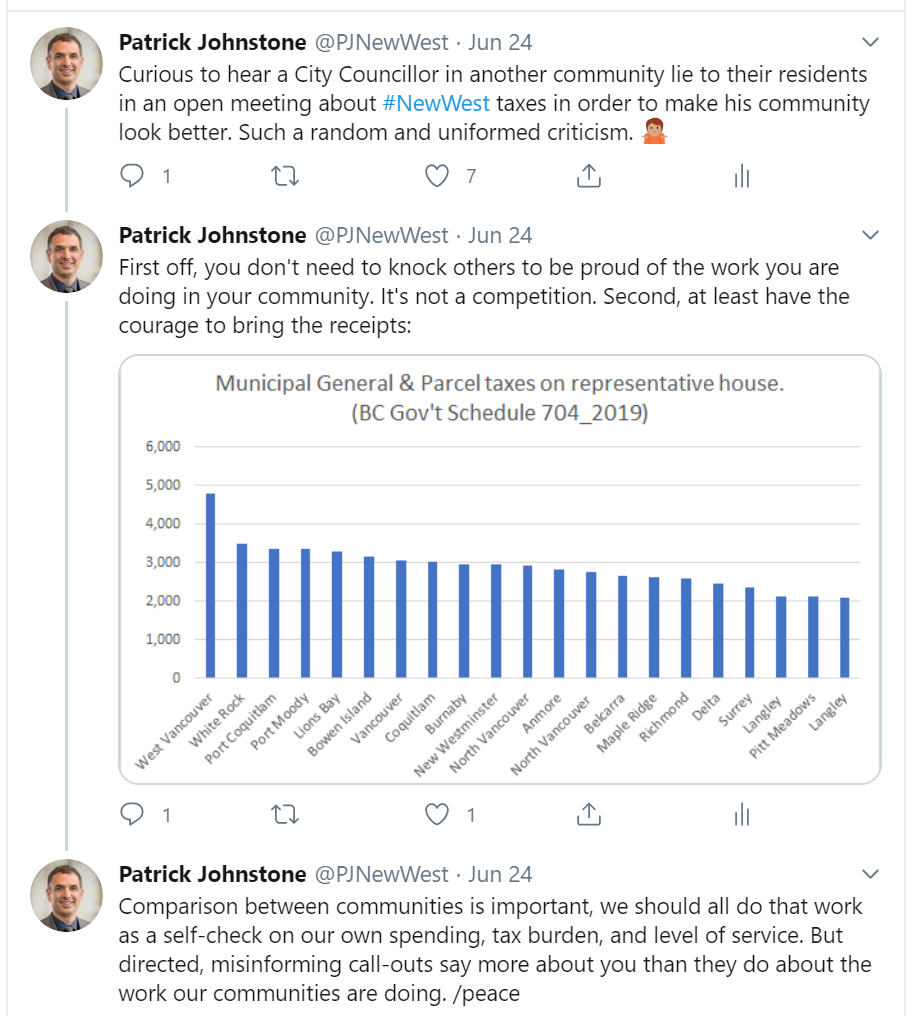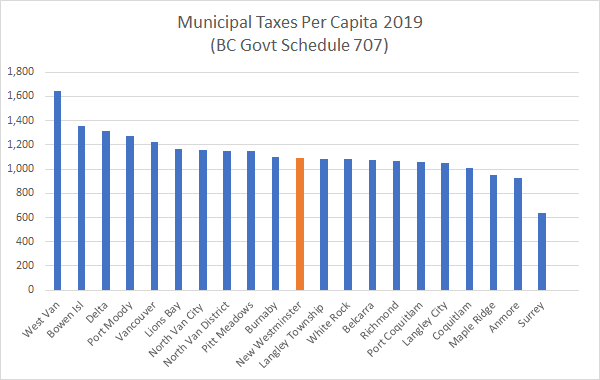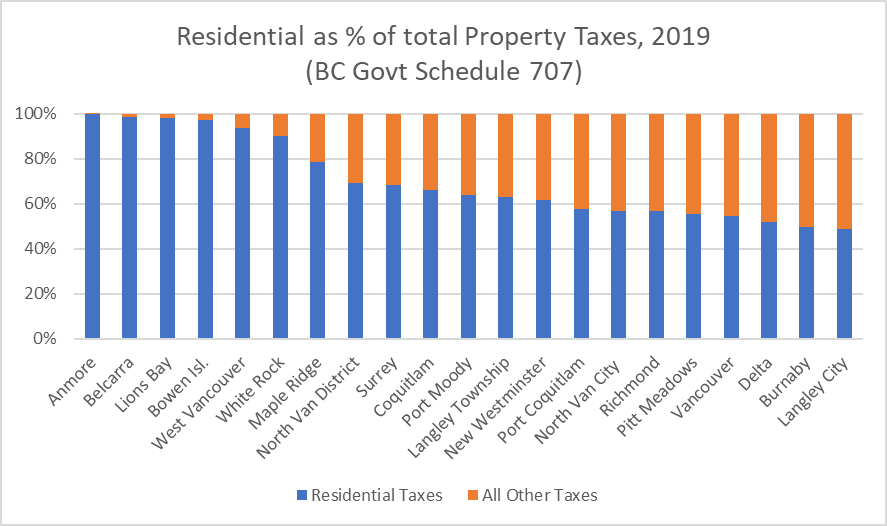At the August 10 Council meeting, we endorsed actions addressing the 2020 Declaration for Resilience in Canadian Cities.
This is a pan-Canadian (but admittedly very “urban”) movement that calls for a post-COVID recovery that doesn’t repeat the mistakes of the last century of city planning, but instead imagines a greener, cleaner, decarbonized economy, built on the foundation of how we build and operate our Cities. It is signed by people across the political spectrum and from local government politics, city planning, business, academia and environmental activism.
The report New West Council received also included some re-framing of the original 20 proposed policy changes to fit better into the Metro Vancouver / New Westminster context, and included some additional policy directions coming out of staff discussions at Metro Vancouver and within the City of New Westminster.
I thought I would take a bit of sunny summer time to go through this declaration and pick out some of the sometimes-subtle changes that local staff suggested, along with my own comments (speaking, as always, for myself, not for all of Council). This might get a little long, because there is a lot here, so maybe make a cup of tea and I’ll break it up to several blog posts (divided up by the major themes of the Declaration). Each section will start with the original Declaration Text, followed by the staff-recommended adaptation for NW/MV context, followed by my comments. I’d love to hear feedback about this.
Ensuring Responsible Use of Land
1. Update zoning policies to allow more households to access existing neighbourhoods by permitting appropriately scaled multi-tenanted housing, co‐housing, laneway housing, and other forms of “gentle density” to be built, as‐of‐right, alongside houses in lowrise residential neighbourhoods.
Update zoning policies to allow more households to access existing neighbourhoods by permitting appropriately scaled multi‐tenanted housing, co-housing, laneway housing, and other forms of “gentle density” to be built, as‐of‐right, alongside houses in low‐rise residential neighbourhoods, especially along the Frequent Transit Network and in Urban Centres.
Apply the principle of equity to land use decisions so that the appropriateness of land use is determined on the basis of its impact on society as a whole rather than only the applicant or immediate neigbhours.
I think it is appropriate that this is first in the list of actions, because zoning impacts how we allocate use of land across our Cities, and the way we do it now is failing to address equity, is failing to address climate impacts or housing form, and is 100% within the power of Local Government to change.
I want to start be addressing the phrase in scare quotes – “gentle density”. This is a code word, and one I have used myself in the past. It means “slightly more housing, only to the extent that it doesn’t cause too much opposition from the people already comfortable housed in our community”. I think inserting that phrase alone calls into question the commitment to applying the principle of equity to land use decisions. I’ll just leave it with that social justice trick of questioning the implied agency and ask “gentle to whom?”
That said, I had another problem with the local context re-framing of this point. It is clear from the original text that we are talking about single family detached housing here, and large neighbourhoods in urban areas where this is currently the only permitted form of housing. The Declaration says we need to challenge that assumption if we are to meet our sustainability goals, and I agree with that. To change this by inserting “Frequent Transit Network” and “Urban Centres” as the only places appropriate for this change, undercuts the actual intent. In its original form, this is challenging the paradigm that high-traffic corridors are not the only place for multi-family housing, and the change softens that call. We need to break the mindset that the only appropriate use of density is to buffer as-right single family detached houses from the noise and pollution of traffic corridors.
Recent discussions around development of 12th Street in New Westminster are a good example of this thinking. Some folks feel that commercial-at-grade with a few floors of housing above is appropriate to support a secondary commercial district like this. Others feel that there is simply too much commercial as is to be supported by the relatively low residential density of the neighbourhood, and more commercial will simply mean more vacant commercial space where housing would be more appropriate. I would argue that the problem is not the density on 12th Street, but the lack of business-sustaining density within that all-important 5-minute walk shed. Walk three blocks back from a health pedestrian-sustained shopping street in Montreal (for example), and you find moderate-density housing, not SFD suburbs in the middle of a City.
Walkable, functional, equitable neighbourhoods cannot be car-reliant neighbourhoods. And Frequent Transit Networks rely on a density to be supportable just as commercial districts do. So let’s expand our thinking to beyond “along Frequent Transit Networks” to “every neighbourhood within walking distance of a Frequent Transit Network”, and we are onto something, which brings us to the next item:
2. Commit to the creation of 15‐minute neighbourhoods in which it is possible to live, work, and shop, by among other things permitting corner stores, local retail, and live‐work housing, and by adding more local parks in all areas of cities
Commit to the creation of 15‐minute neighbourhoods (ie: complete communities) in which it is possible to live, work, play and shop, by among other things permitting child care, corner stores, local retail, and live‐work housing, and by adding more local parks equitably throughout cities.
This idea behind 15-minute neighbourhoods is that residents should be able to access most of their daily needs within a 15-minute walk, or within about 1,200m of their home. This could mean a 5-minute bike ride, a 10-minue roll in a mobility scooter, or a 15-minute walk, but the idea is that it reduces automobile reliance for most trips. Yes, people can and will own cars, yes, not everyone can live within 1,200m of their job so there need to be commuting options, but if shopping, schools, libraries, rec centres, parks and “third places” are close enough by, stronger communities are built. Of course, this also means there need to be enough people within that 15-minute walkshed to support the things we want to see there, which brings us back to density.
3. Restrict short‐term rentals to ensure that rental homes are not once again removed from the rental market post‐COVID‐19.
Regulate short‐term rentals to ensure that rental homes are not once again removed from the rental market post‐COVID‐19.
The shift from “restrict” to “regulate” is a subtle one, perhaps. I have been banging the drum about the need for us to address AirBnB/VRBO/etc. in the City for several years, but it has just never been seen as a priority for New West staff or Council. It is a bit challenging to enforce, and we do not receive a lot of complaints about it, so perhaps the urgency is not there, and the COVID situation has probably delayed any eventual STR crisis, but the impact on the affordable rental market is pretty clear. Add this to the pile of better rental regulation we need in the province, but this one is 100% within the power of local governments to enact – we can’t pass the buck on this one.
4. Remove all mandatory minimum parking requirements for any new building, to both signal a shift in mobility priorities, and to remove the costly burden of parking, on housing.
Remove parking minimums, enhance visitor parking and bicycle parking supply and include vehicle sharing option for any new multi‐family and mixed‐use building particularly along the Frequent Transit Network, to both signal a shift in mobility priorities, and to remove the costly burden of parking on housing. Consider the introduction of parking maximums in transit‐oriented locations.
I think the changes here are again subtle (removing “all”, then adding other qualifiers that may soften it a bit), but reducing the requirement to build off-street parking for new multifamily developments has been an ongoing process in the City, and one Council has asked staff to advance recently. There is no doubt about the data: we are building way more parking than we need in transit-oriented developments, and there are real costs related to this overbuilding – cost to the housing, and costs to society. I think the one part missing from this is the acknowledgement that off-street parking policy needs to be coupled with properly allocating and pricing on-street storage of cars, and one again, planning policy and transportation policy overlap.
5. Prioritize the use of existing municipally‐owned land for the creation of affordable housing that remains affordable in perpetuity, and for strategic public green space that supports increased density.
Prioritize the use of existing municipally‐owned land for the creation of affordable housing and non‐profit childcare that remains affordable in perpetuity, and for strategic public green space that supports increased density.
This is another area New Westminster is already moving on. We do not have a great legacy of City-owned land compared to some jurisdictions, but we have been successful at getting two small-lot affordable housing developments built in the last couple of years, a TMH supportive housing project just opened in Queensborough on City land, and we are looking at two other sites for upcoming projects. We have also been successful at leveraging childcare space with new development. The greenspace issue is a bit of a harder nut to crack in some of our neighbourhoods, but I hope the Streets for People motion and our Bold Step #7 on re-allocated road space will provide some unexpected opportunities here.
6. Enact stronger restrictions on urban sprawl, including moratoria limiting additional, auto‐dependent, suburban sprawl developments
Enact stronger restrictions on low density, auto‐dependent residential, commercial, and employment developments.
This doesn’t speak directly to New Westminster, as we are already a built-out community, and growth will generally be through density increases and towards less sprawl. However, it does induce us to move towards less car-dependent and sprawly communities as we look at new master-planned communities like Sapperton Green and the future of the 22nd Street area in Connaught Heights.
The next section will be on “Decarbonization of our Transportation Systems”, whenever I get to writing about it.
